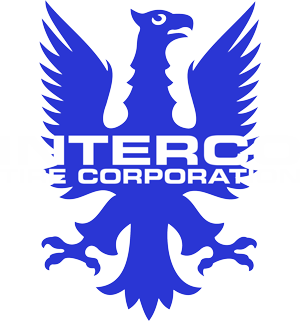Caster, Camber and Toe
Poor camber and caster alignment can cause your vehicle to "pull", and can cause tire tread to wear unevenly. Toe in won't cause your vehicle to pull, but it can cause extremely fast tire tread wear. This is why your vehicle can pull and not wear out tires, or it can drive perfectly straight and destroy them in a hurry! Regular alignment, rotation and running the proper air pressure are essential elements in getting the most tread life out of your tires.
Caster is a little harder to explain, but it has to do with the angle between the ball joints, or on a strut car, from the top of the strut to the lower ball joint. You can think of this angle like the forks of a bicycle. Bicycle forks angle out towards the front at the bottom, (or in towards the vehicle at the top) which is "positive" caster. A positive caster is what allows you to ride your bike with no hands. It is no different on four-wheel vehicles. If you don't have enough positive caster (forks too little angle toward the front) the car will wander and feel unstable. If you have too much positive caster, the vehicle will be harder to turn. However, just like with camber, vehicle pull is not caused by too much or too little caster, but by side to side imbalance. As far as we know, all four wheel vehicles are designed with positive caster (forks out towards the front at the bottom). So, we are talking about more or less positive caster. Camber may pull toward positive (more tilt in at the top) but caster will pull toward negative, or less caster. If you think of the two front wheels like a pair of cycle forks spread out at a distance, more positive caster on one side would mean that one of the forks of the "bike" was further forward than the other, (though this is really just an angle measured in 10ths of degrees). So, the vehicle would pull to the side with the "fork" further back. Again, caster, like camber can cause pulls, but caster will rarely cause much wear. (Note: caster is only significant on wheels that turn, so unless your vehicle has rear wheel steering, caster will only be adjustable in the front.)

Caster is the fore or aft slope of the steering axis. The steering axis is a line drawn through the upper and lower ball joints of the knuckle. Positive caster is when the bottom of the steering axis line is in front of the tire's contact patch. Zero caster is when the steering axis is at 0 degrees. Factory alignment specs for nearly all vehicles call for a certain degree of positive (shown) caster. This ensures good stability, helps maintain straight-ahead direction and promotes steering wheel self-centering.
Camber is the tilt of the tire from top to bottom. If the tire tilts in at the top (towards the vehicle), it has a “negative" camber. If it tilts out at the top (away from the vehicle), it has a “positive" camber. Typical camber on modern vehicles is from 0 to 2 degrees negative (in at the top), while many classic cars (50's to 70's) used 0 to 1 degree positive camber (out at the top). Camber can cause a pull, but it doesn't do it by being extremely negative or positive, but by being different from side to side. If camber is the cause of your pull, it will always pull to the side with more camber (from negative to positive). If your car has .5 degrees negative camber on one side and 1 degree negative camber on the other side it will pull to the .5 degree side (since -.5 is more than -1). Or if it has 1 degree positive camber on one side and .5 degrees positive camber on the other, it will pull to the 1 degree side (since 1 is more than .5). However, a difference in camber side to side will not result in tire wear, only extreme amounts of camber, negative or positive, will cause tire wear, but this wear will be relatively slow.

Camber is the inward or outward tilt of the front tires as viewed from the front. Inward tilt is negative, outward tilt is positive. Camber is used to distribute load across the entire tread. Improper camber makes the tire wear on one edge, and causes the vehicle to pull to the side that has the most positive camber.

Toe in is just like it sounds. If you look down at your feet and your toes are farther out than your heels, this simulates "toe out", if your toes are farther in than your heels (pigeon toed) that simulates "toe in". Obviously, you can have toes and heels even (zero toe) or you can have one pointing out and one in. However, even if one is in and one is out, you will simply turn the steering wheel to go straight down the road. Therefore, toe in (or out, or both) can definitely make your steering wheel crooked when driving straight, but it almost never causes a pull. On the other hand, though it may not cause a pull, it is the single greatest cause of premature tire wear. With enough of an error in toe your tires can wear out in a real hurry, the worst we've seen is 3 days on brand new tires! And 5,000 miles on brand new tires is not at all unusual, even though the vehicle may track perfectly straight down the road!
Toe is the side-to-side difference in distance between the front and rear of the front tires. If the distance is closer at the front, it's called toe-in. If the difference is closer at the rear, it's called toe-out.







